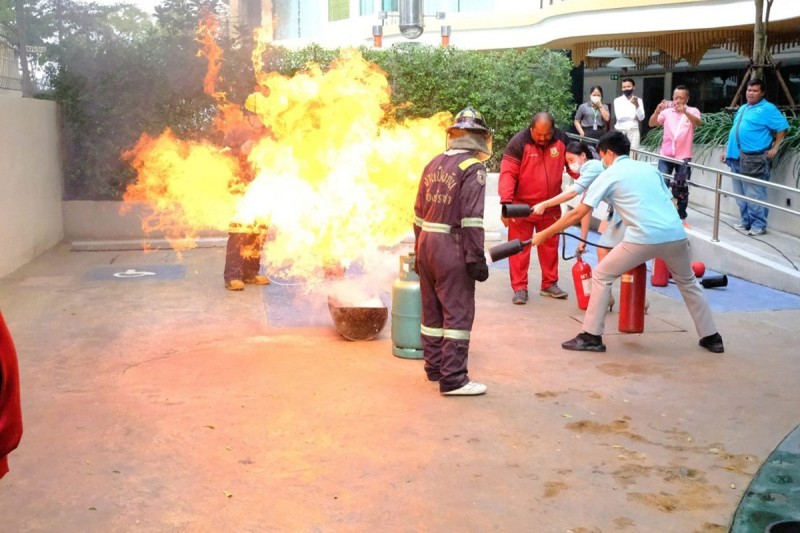FIRE DRILLS
We have conducted fire drill in Our Hospital in order to maintain patient safety, as it is the priority of the hospital during emergency situations.
A fire drill is a method of practicing how a building would be evacuated in the event of a fire or other emergencies. In most cases, the building's existing fire alarm system is activated and the building is evacuated by means of the nearest available exit as if an emergency had actually occurred. The purpose of fire drills in buildings is to ensure that everyone knows how to exit safely as quickly as possible if a fire, smoke, carbon monoxide or other emergency occurs and to familiarize building occupants with the sound of the fire alarm.
It involves creating a situation which replicates what would happen if a real fire were to occur, usually with the inclusion of fire alarms, and requires your employees, and anyone else who may be within your property at the time, to evacuate.
If Emergency situation takes place then Confine the area by closing all doors. Extinguish the fire if the fire is small (use P.A.S.S). Evacuate patients from the area if instructed to do so by fire officials or hospital leadership areas adjacent to the fire's point of origin).
The Fire emergency protocol says Pull the nearest fire alarm (located at any exit) Evacuate the building. DO NOT use elevators. Proceed to an assembly area across the street and away from the building. Report the fire.
Basic principles of fire safety
There are three basic principles that all hospital could adopt to prevent fire accidents. And in an eventuality, these basic principles can prevent damage to lives and property. They are: prevention, protection, preparation
Prevention: Following electrical, housekeeping hygiene
- Ensure that electrical points are not overloaded. Make sure that a 15 amp plug is not inserted into a 5 amp switch.
- Check all electrical cords for frays or tears.
- Keep passageways clear of any obstructions.
- Keep generator rooms, elevator shafts, electrical/ducts/panels, etc., clear of any combustibles; PPE kits, cartons, plastic waste.
- Maintain at least 2-3 metres distance between electrical equipment and combustible material.
Protection: Creating infrastructure for emergencies
- Overhead sprinklers: Sprinklers are by themselves like a small fire fighter which helps curtail the spread of fire.
- If sprinklers are unavailable, a simple hose pipe which is connected to a water source can also help. In most buildings they have hose reels for such purposes.
- Fire Extinguishers
- The right kind of extinguishers should be installed in the appropriate area, ICU, passageway, kitchens, electrical rooms, etc.
- Ensuring that sufficient numbers of extinguishers are kept at regular intervals – every 15 metres.
- Extinguishers should be installed at chest level, for easy access.
- Instructions have to be posted along with the extinguishers so that in an emergency anyone can deploy it.
- Public Address (PA) System: provides hospital operators with a way to disseminate instructions.
- Signages: Ensuring that luminescent signages are placed at floor level also. In the eventuality of a fire, smoke rises above ground. For people crawling under the smoke at ground level, these signages are visible.
- Kitchen and Laundry
- Avoid grease fires by emptying appliances’ grease traps on a regular basis.
- Store flammable liquids, oils or other items far away from cooking equipment.
- Keep portable fire extinguishers (including dry chemical extinguishers) close by and ensure that the staff knows how to operate them.
- Chemicals
- Pay special attention to areas where flammable chemicals are stored. These areas should not be accessible to the general public.
- Ensure that no fire/smoke comes in contact with this area such as cigarette, agarbatti, candle, etc
- Fire lift is meant for fire personnel only, not for public, during an evacuation. Fire lifts are designed to withstand heat for an hour or so, to help fire personnel reach higher floors for containment and rescue. Public should always use the staircase in case of fire and not any lift.

